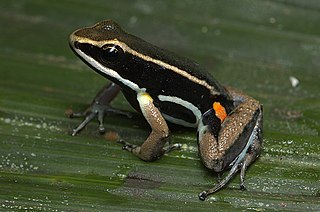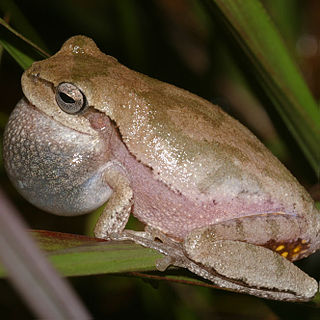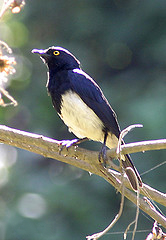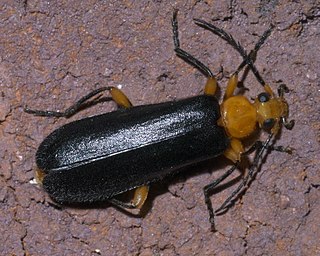Related Research Articles

The surilis are a group of Old World monkeys in the genus Presbytis. They live in the Thai-Malay Peninsula, on Sumatra, Borneo, Java and smaller nearby islands. Besides surili, the common names for the monkeys in the genus also sometimes use the terms "langur" or "leaf monkey."

The aplomado falcon is a medium-sized falcon of the Americas. The species' largest contiguous range is in South America, but not in the deep interior Amazon Basin. It was long known as Falco fusco-coerulescens or Falco fuscocaerulescens, but these names are now believed to refer to the bat falcon. Its resemblance in shape to the hobbies accounts for its old name orange-chested hobby. Aplomado is an unusual Spanish word for "lead-colored", referring to the blue-grey areas of the plumage – an approximate English translation would be "plumbeous falcon". Spanish names for the species include halcón aplomado and halcón fajado ; in Brazil it is known as falcão-de-coleira.

Odontolabis femoralis is a beetle of the Family Lucanidae. It lives in Indonesia.

Allobates femoralis is a species of frog in the family Aromobatidae. It is found in Bolivia, Brazil, Colombia, Ecuador, French Guiana, Guyana, Peru, and Suriname. Its natural habitat is tropical lowland forests.

The pine woods tree frog, is a species of frog in the family Hylidae, endemic to the southeastern United States.

Pseudophilautus femoralis is a species of frog in the family Rhacophoridae. It is endemic to Sri Lanka.

Abbott's starling is a species of starling in the family Sturnidae. It is found in Kenya and Tanzania. Its natural habitat is subtropical or tropical moist montane forests. It is threatened by habitat loss, and its population is estimated at 2500–9999. This species, at 16 to 18 cm long, is the smallest species of starling.

The Raffles' banded langur, also known as the banded leaf monkey or banded surili, is a species of primate in the family Cercopithecidae. It is endemic to Singapore and southern Peninsular Malaysia. The species underwent taxonomic revisions in 2019 and 2020, in which two former subspecies were elevated to separate species. As a result, the Raffles' banded langur meets the criteria for being listed as critically endangered by the IUCN. It is mainly threatened by habitat loss.

The white-thighed surili is a species of primate from the family of old world monkeys (Cercopithecidae). This species lives arboreal amongst the sub-montane forests. It is endemic to the Thai-Malay Peninsula, the Riau Archipelago and Sumatra. In addition, the white-thighed surili contain four subspecies: siamensis (nominate), cana, paenulata and rhionis, are recognized here. Furthermore, they are characterized by the white patches located on the outside of their legs, which is what gives them their name. Additionally, they can be referred to as pale-thighed langur/surili. These primates are an important species for the diversity of forest environments in the Malaysian area.

Homopus femoralis, commonly known as the greater padloper, is a small tortoise of the genus Homopus, indigenous to the highveld grasslands of South Africa.

Pogonocherini is a tribe of longhorn beetles of the subfamily Lamiinae.
Polyacanthia flavipes is a species of beetle in the family Cerambycidae. It was described by White in 1846, originally under the genus Lamia. It is known from New Zealand.
Polyacanthia fonscolombei is a species of beetle in the family Cerambycidae. It was described by Xavier Montrouzier in 1861.
Polyacanthia medialis is a species of beetle in the family Cerambycidae. It was described by Sharp in 1886, originally under the genus Poecilippe.
Polyacanthia stictica is a species of beetle in the family Cerambycidae. It was described by Henry Walter Bates in 1874, originally under the genus Poecilippe.
Polyacanthia strandi is a species of beetle in the family Cerambycidae. It was described by Stephan von Breuning in 1939. It is known from Australia.

Neopyrochroa femoralis is a species of fire-colored beetle in the family Pyrochroidae.
Ctenophorus femoralis, the long-tailed sand dragon, is a species of agamid lizard occurring on spinifex covered sand-ridges and sand-plains on the arid mid-western coast of Western Australia.

Robinson's banded langur, also known as Robinson's banded surili, is a species of monkey in the family Cercopithecidae. It was formerly considered a subspecies of the Raffles' banded langur Presbytis femoralis, but genetic analysis revealed that it is no more related to Raffles' banded langur than it is to several other Presbytis species. It lives in the northern Malay Peninsula, including southern Burma and Thailand. It is listed as near threatened by the IUCN.
The East Sumatran banded langur, also known as the East Sumatran banded surili, is a species of monkey in the family Cercopithecidae. It was formerly considered a subspecies of the Raffles' banded langur Presbytis femoralis, but genetic analysis revealed it to be a separate species. Its range is restricted to the Riau Province of east-central Sumatra. Its conservation status has not been formally assessed by the IUCN. However, due to its declining population and restricted range in small, isolated forests subject to high rates of deforestation, it likely meets the criteria for critically endangered status.
References
- ↑ BioLib.cz - Polyacanthia femoralis. Retrieved on 8 September 2014.